Ready to ship by default
Checks catch broken connections and mismatched data before you run. Flows stay shippable as they evolve — not just demo-ready.
Flow-Like is a visual workflow tool. Build with drag-and-drop blocks, and get a clear record of where data came from, what changed, and why the result looks the way it does — no black boxes.
From renaming files to analyzing data to running AI — build flows once and run them anywhere.
Please wait while we prepare everything
Draw your flow and see your data’s journey as you build: what came in, how it was filtered and transformed, and what went out. Inline feedback keeps things usable, and snapshots let you reproduce issues and compare runs—no guesswork.
Pins know what they accept, so you wire correctly and refactors don’t break flows.
Miswired edges surface immediately. Fix mistakes as you go—before they ship.
Inspect payloads and timings at each step. Trace changes and explain results with confidence.
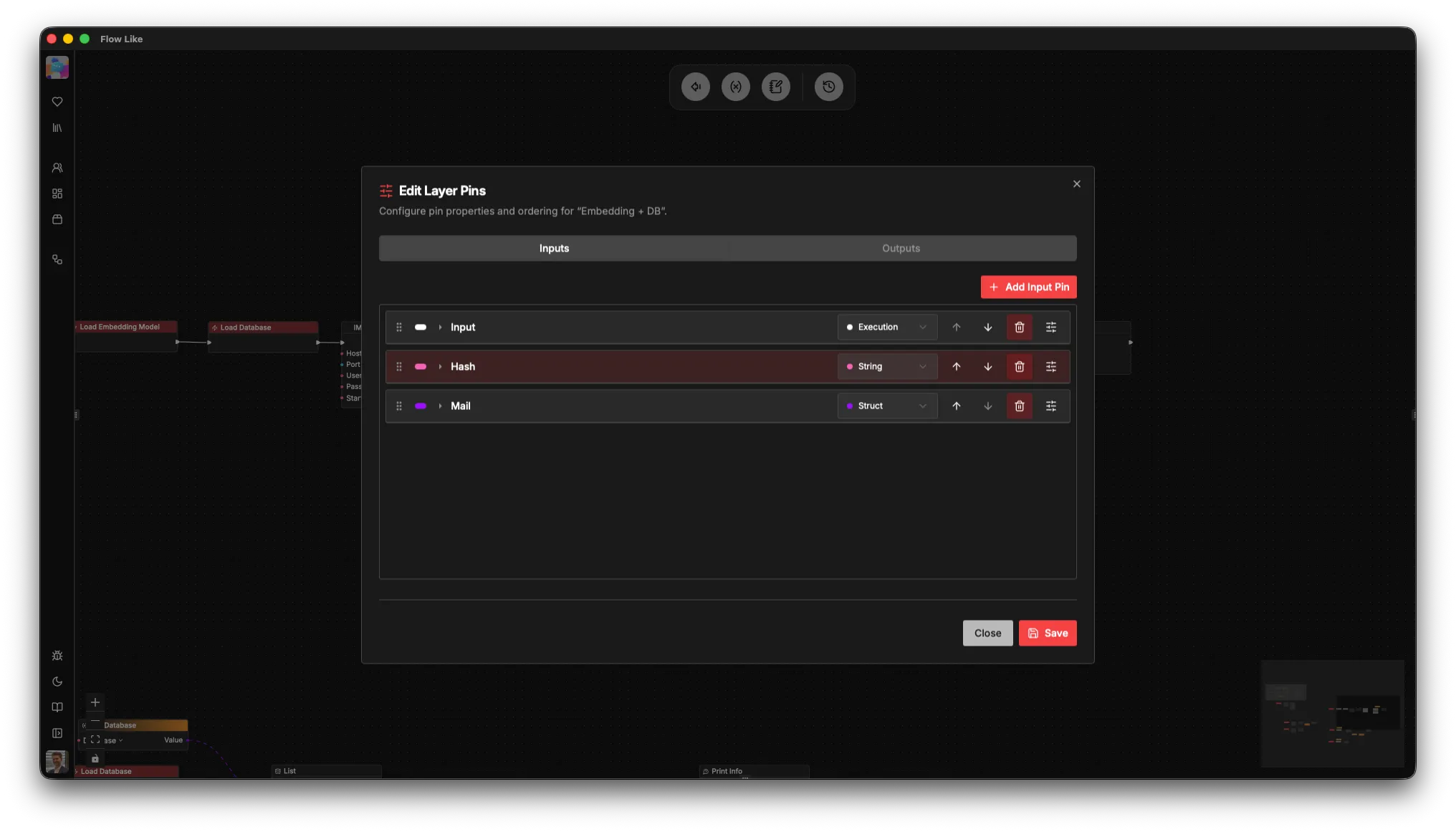
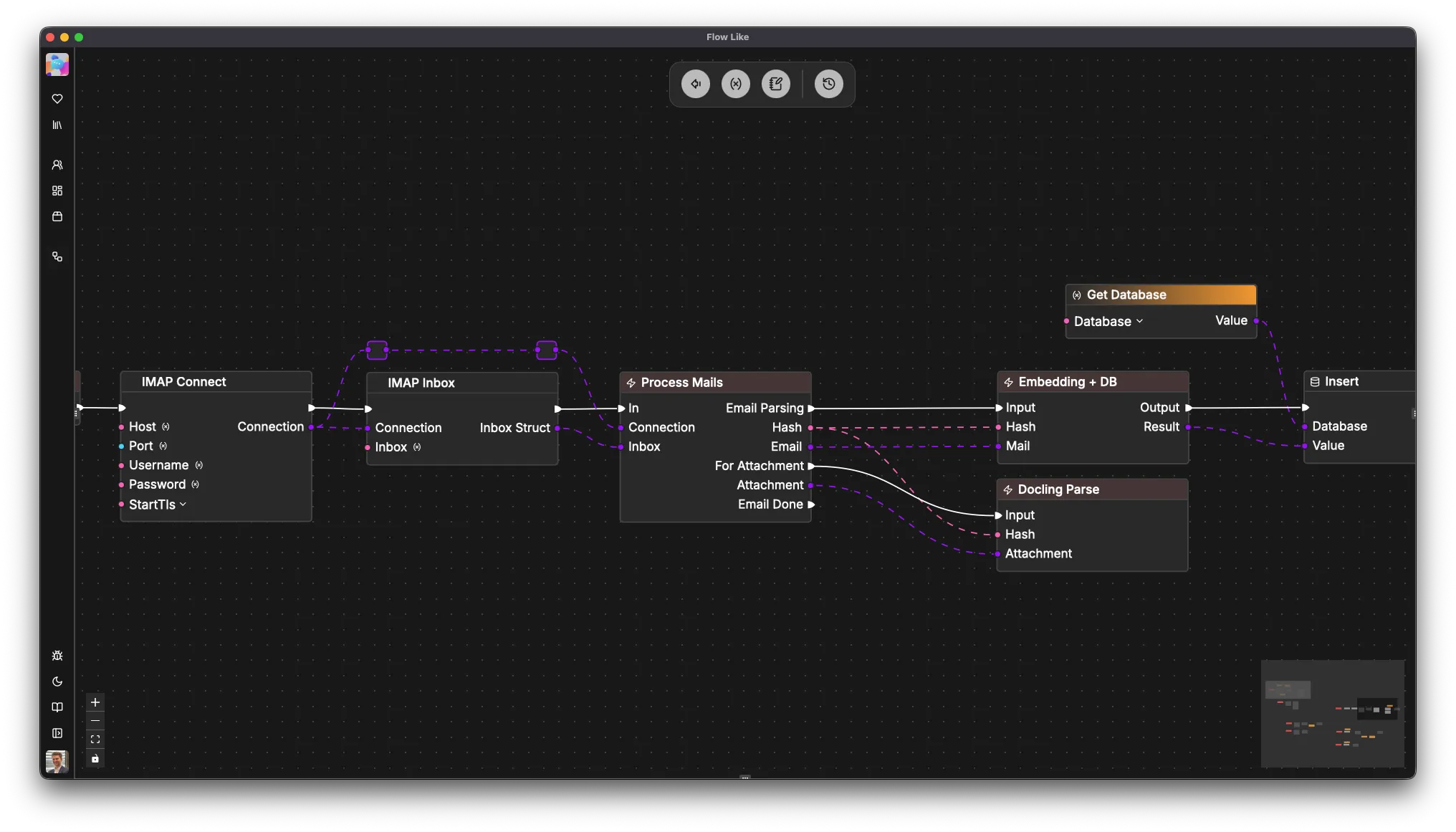
The flow you sketch is the flow you ship. Built-in checks keep connections valid, every change is easy to review, and each step records inputs and outputs — so you can move from first draft to production with confidence, not glue code.
Same flow, same visibility — from draft to run.
Checks catch broken connections and mismatched data before you run. Flows stay shippable as they evolve — not just demo-ready.
When something changes, Flow-Like shows what changed and whether it still fits. Review diffs, keep contracts intact, and avoid breakage.
Each step records inputs and outputs, so issues are easy to spot as traffic grows. Runs stay steady and explainable — no black-boxes.
Your AI copilot for building, debugging, and understanding workflows. From a screenshot to a fully implemented flow — in seconds.
Watching: Screenshot → workflow transformation
Most tools show a green checkmark and move on. You're left guessing where the data came from, what got filtered or transformed, and why the result looks the way it does.
Flow-Like adds a built-in data trail — every step captures inputs, changes, and outputs.
Explainable outcomes. Easier reviews, faster debugging, and fewer surprises.
Start solo, share with your team, and run in production — the same visibility stays with you.
Manage the whole journey without losing visibility. Start a private draft, invite your team when it’s ready, and go live — with the same saved “what went in, what changed, what came out” at every step.
Same behavior at every stage.
Try ideas on your machine. Each step saves what went in and what came out, so you can see what changed — no guesswork.
Flip the project online and invite colleagues. Roles and approvals come along for the ride.
Choose your target — Edge, Cloud, or on-prem. Click deploy. Same validated graph, different runtime target.
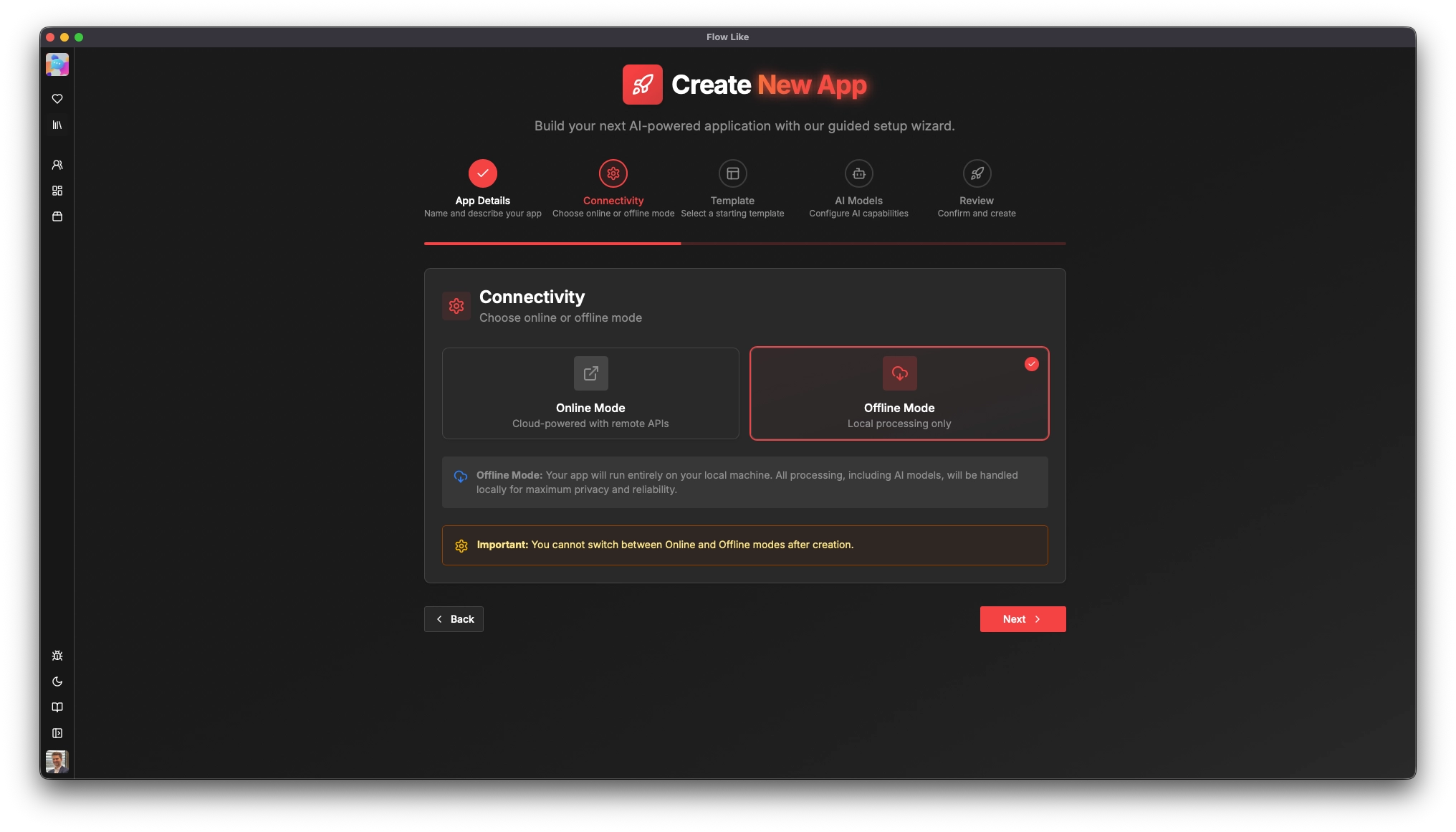
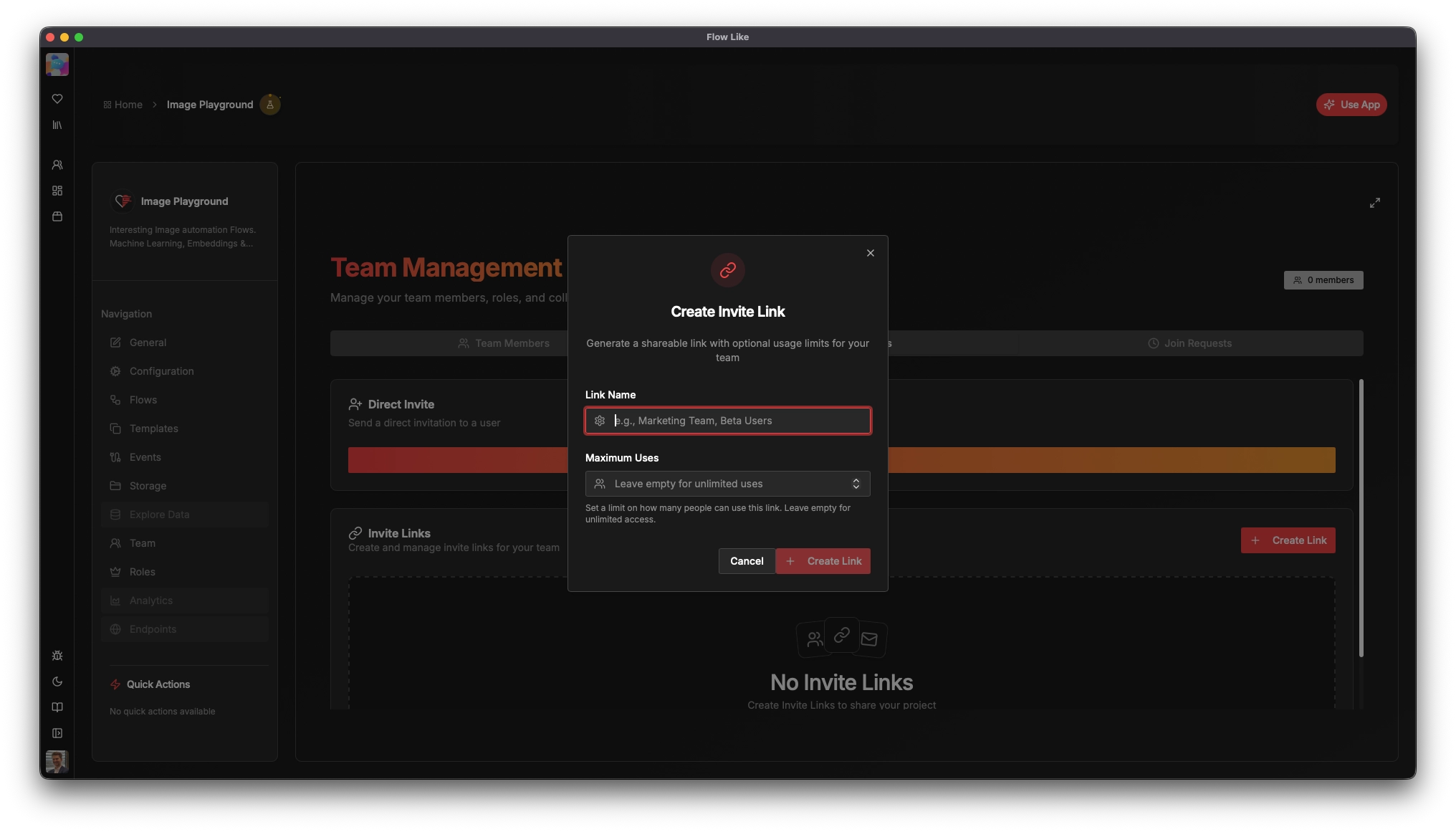
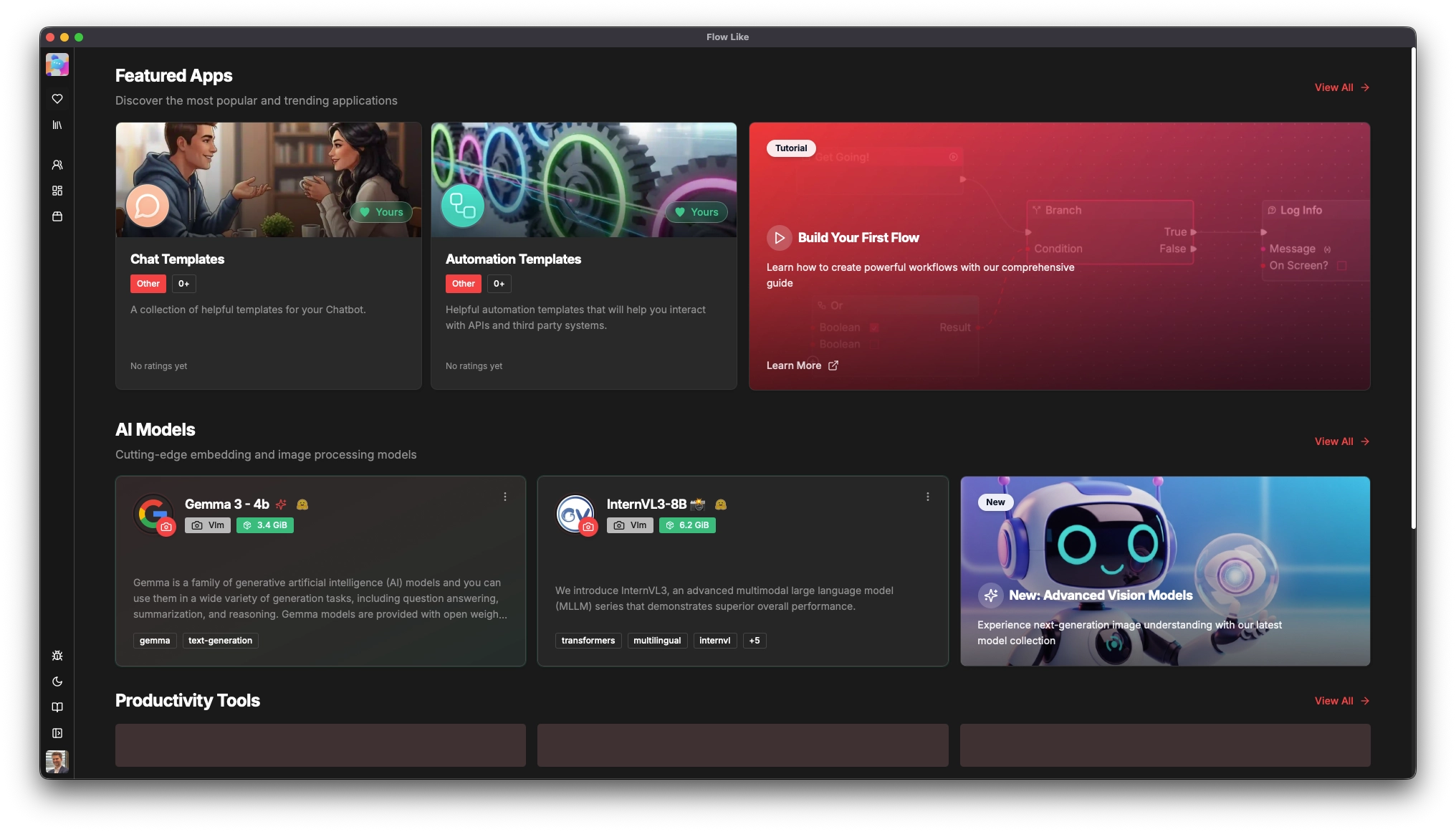
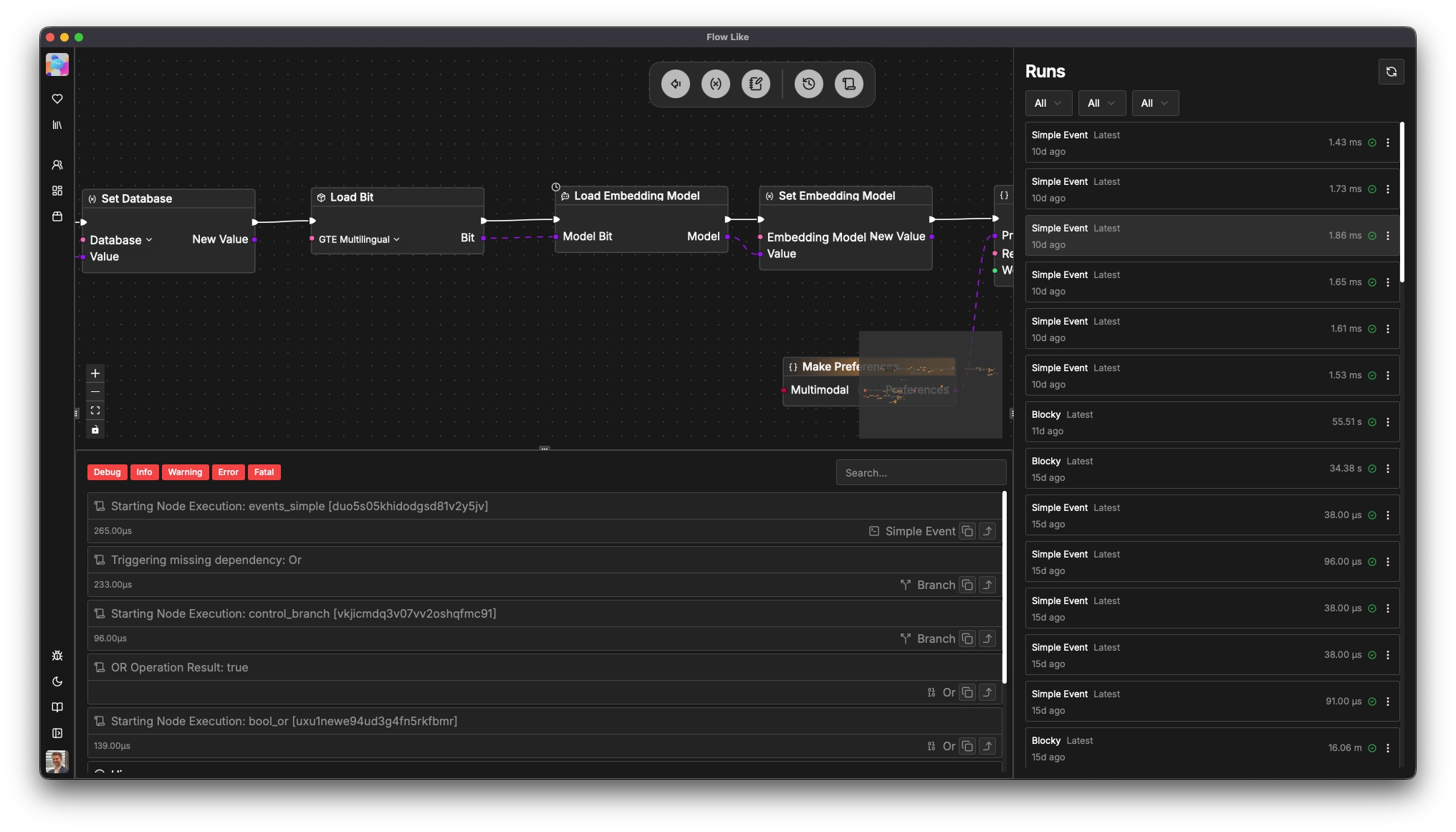
Flow-Like runs your flows at top speed and makes every run explainable. See what went in, what changed, and what came out — with timestamps and spans you can drill into when you need the details.
Connect APIs, databases, devices, or spreadsheets without guesswork. Each node has a clear interface, tests, and versions — so what worked yesterday works tomorrow, for you and your team.
Inputs and outputs are checked and versioned, so updates don’t break other flows.
Nodes ship with fixtures and tests. Change things with confidence — you’ll catch issues early.
Publish privately or to a catalog with versioning, so teams can reuse and upgrade safely.
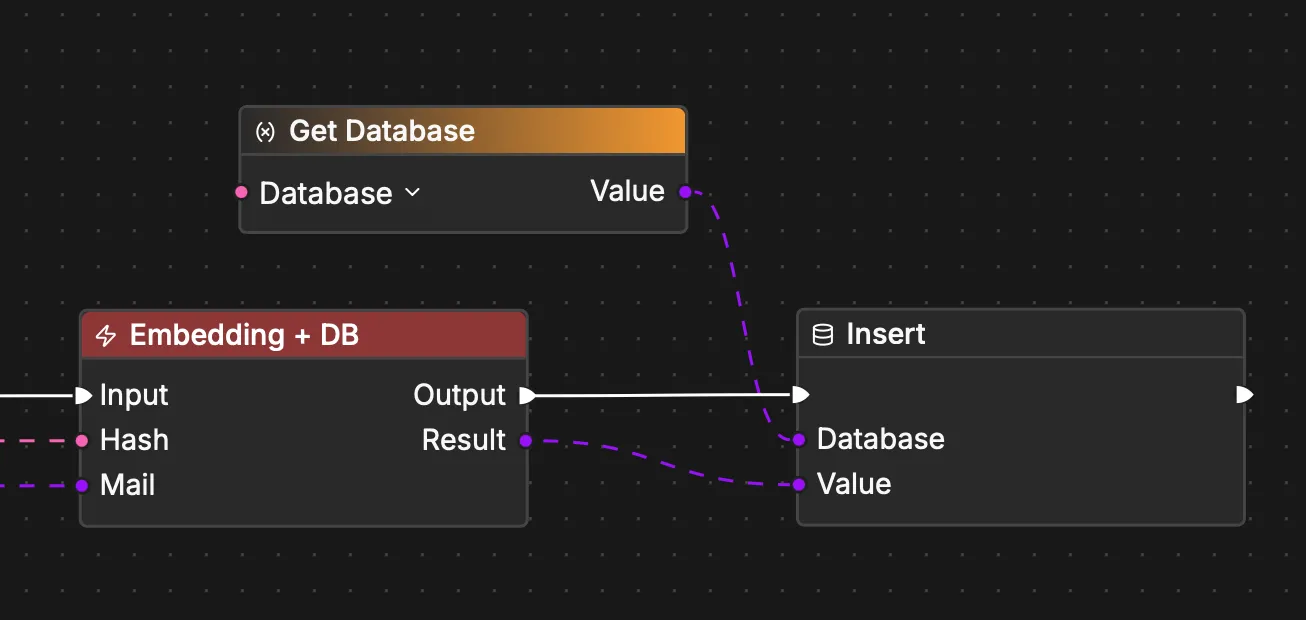
Drop the visual editor into your app, run the engine behind the scenes, or combine both. Your logo, your colors — with the same visibility and audit trail.
Mount the visual editor in any route and theme it with your tokens.
Map your palette; instant dark/light support.
OIDC/JWT and scoped secrets per tenant or app.
Per-tenant quotas, events, and audit trail.
Control flows via SDKs and a simple REST API.
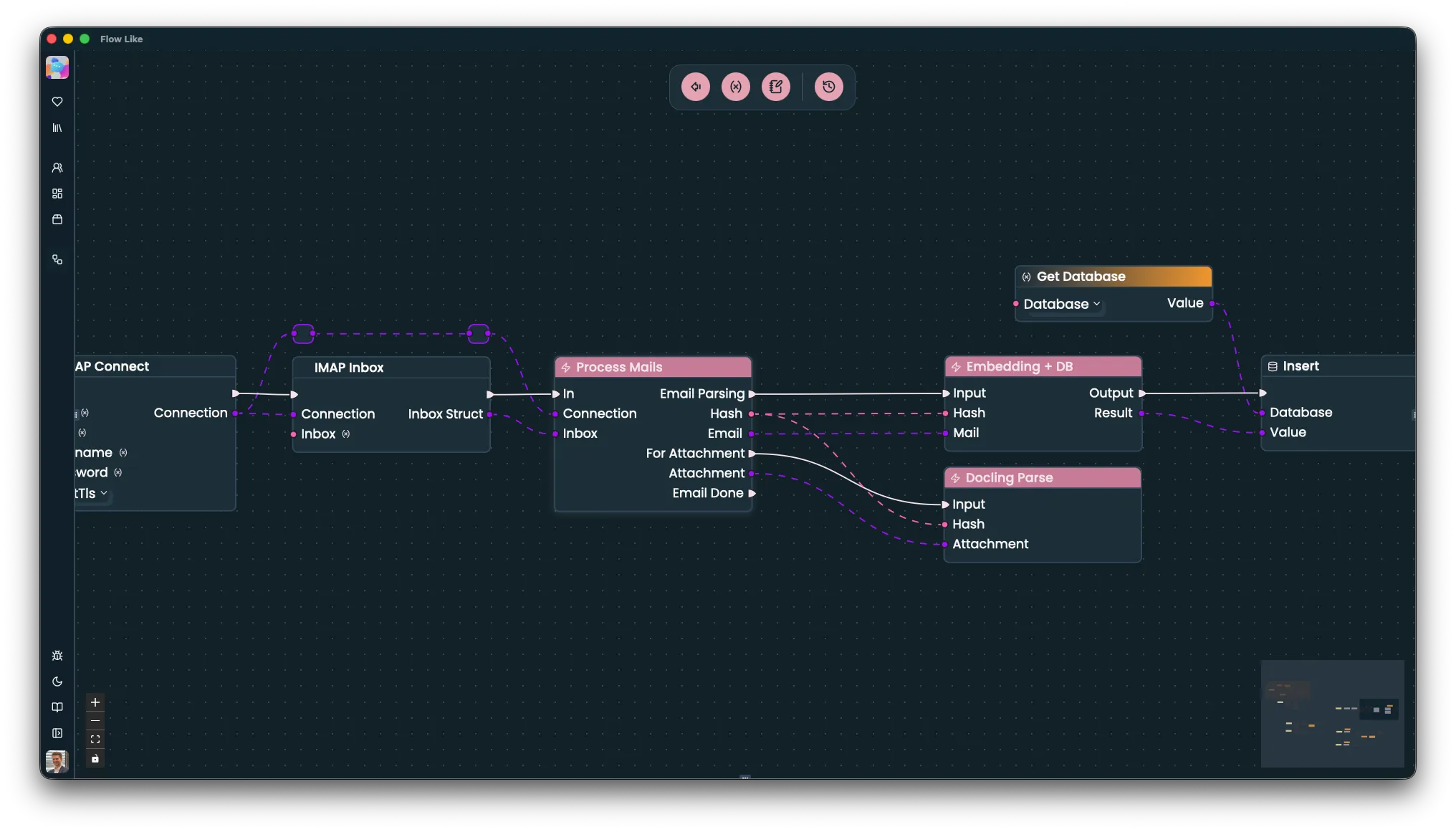
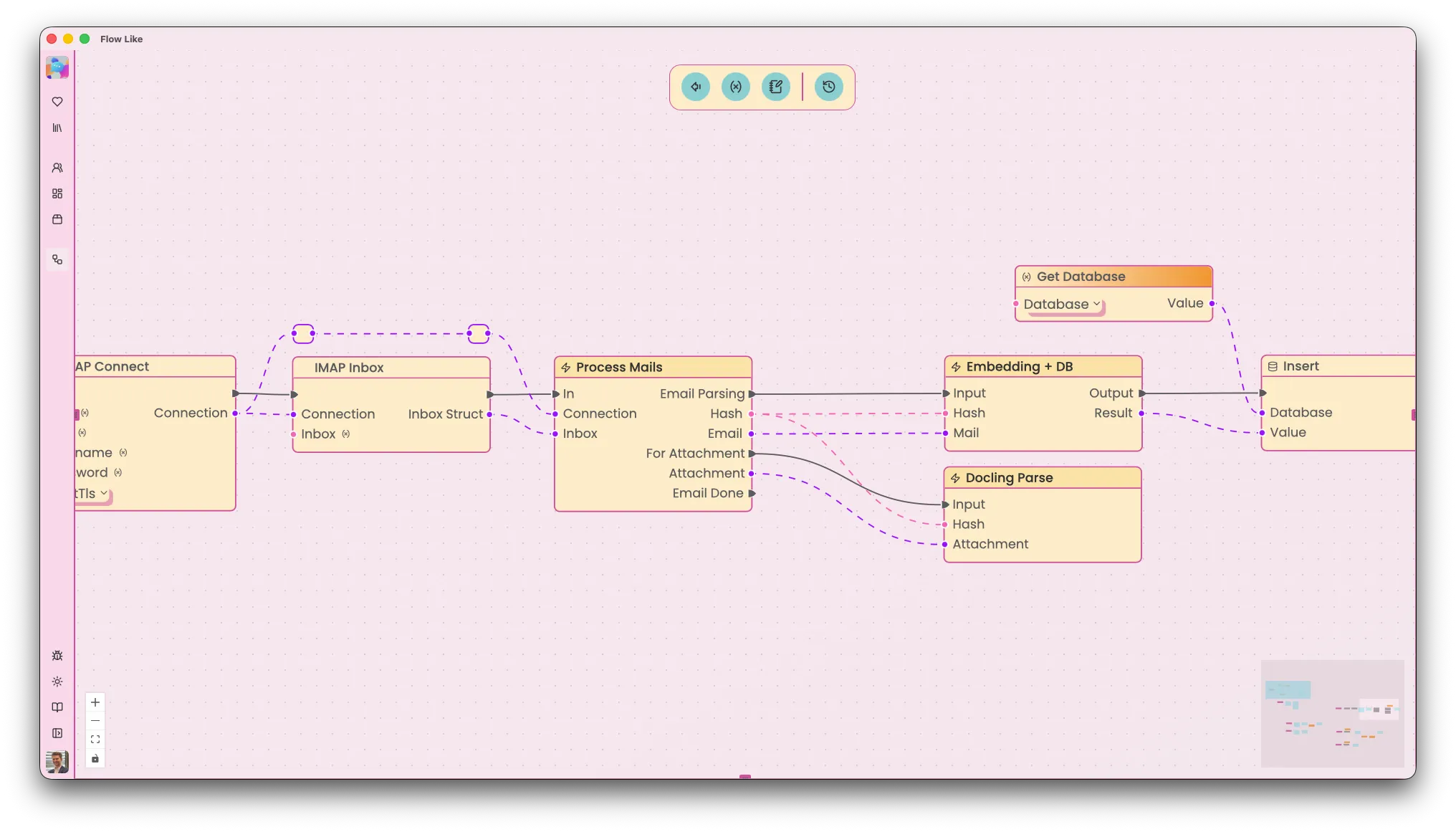
People think in steps. Systems run on data. IT cares about logic. Flow-Like shows all three together, so every role sees the same truth — just in their own language.
Three interconnected views of the same process
The plain-English story of how work gets done. Who does what, when, and why — captured as one flow. Great for managers and business owners to align on the same steps.
Save files, keep records, and find things fast — all inside your flow. No extra services to wire up. Plug a node in, and your data is ready to use.
Upload a file, store a record, or search across both — without leaving the workflow. Everything stays connected to the steps that used it, so you can explain results later.
Clean, legible cards with real contrast. One featured deep-dive + two quick reads.

An honest comparison of Dify and Flow-Like—two powerful platforms that excel in different scenarios. Learn when to use Dify's GenAI focus versus Flow-Like's typed automation.
Read post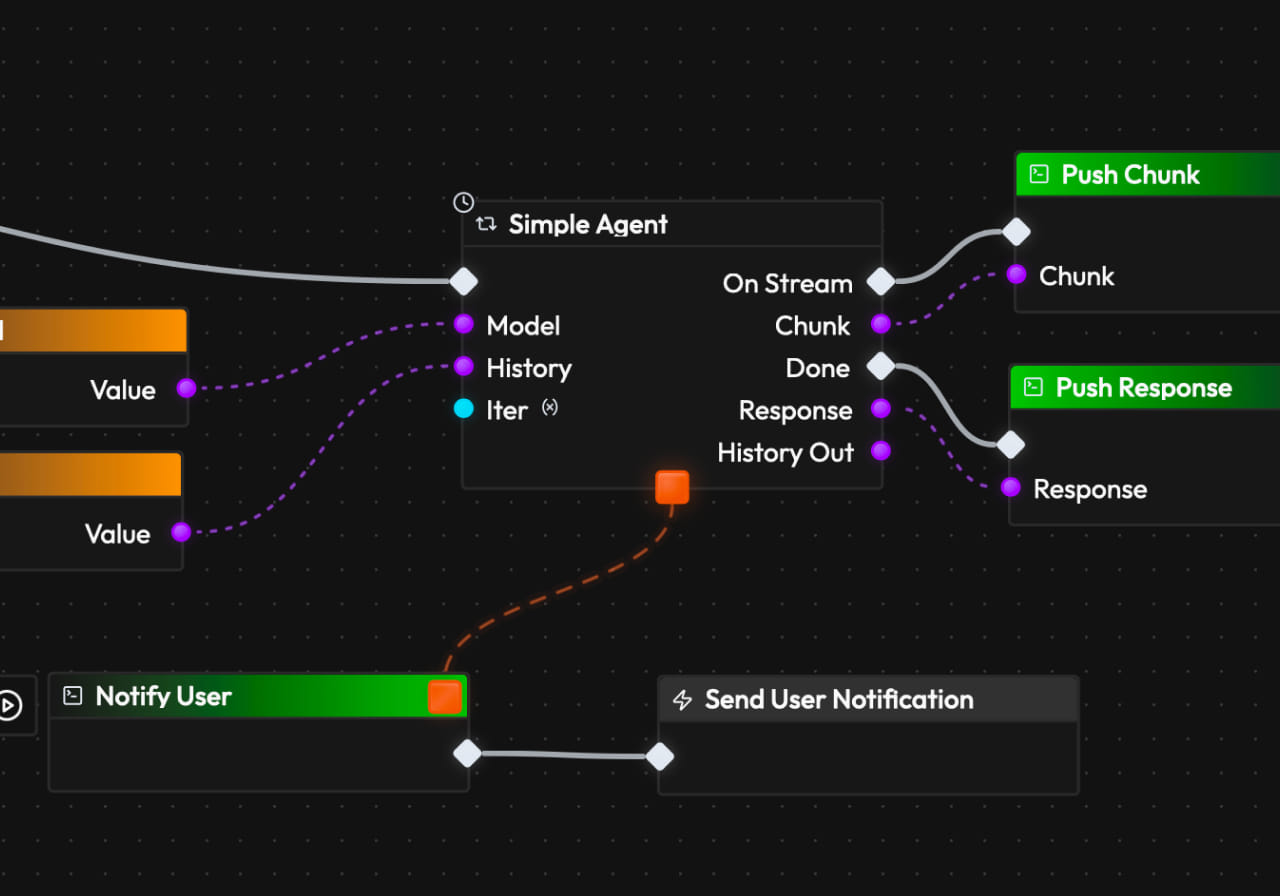
No more manual schemas: define pins on your functions and the agent interface does the rest. Reuse functions for deterministic calls, MCP tools supported, more built-ins coming.
Read post
Learn how to securely expose Flow-Like's local HTTP event endpoints to the internet using free tunneling solutions like Cloudflare Tunnel and ngrok.
Read postSearch, filter, and deep‑link to answers. Built for individuals and enterprises alike.
Locally on macOS, Windows, and Linux; in containers; on the edge; or in any cloud. Start offline on your laptop, move to production later without changing the graph.
Yes. Flow‑Like is local‑first. You can run completely offline or in air‑gapped environments. Sync to cloud later if you choose.
Wrap systems as typed nodes with explicit input/output types. Embed or white‑label the editor, or run the engine headless inside your app.
Nodes are authored in Rust today. A WASM node SDK is planned to broaden language support.
Yes — approvals, policy guardrails, roles, and versioned flows with audit trails are first‑class to meet operational and compliance needs.
Object‑store–centric by design (e.g., S3/local). For vector search we use LanceDB behind the scenes; graphs interact via nodes — no raw SQL required.
Flows are versioned. You can stage changes, request approvals, and roll back safely. Git‑based workflows integrate smoothly.
The same typed graph runs locally and in production. Package as a container, deploy to edge/cloud, and promote versions via approvals.
The runtime is written in Rust for high throughput and low latency. Many workloads run dramatically faster than typical scripting‑based stacks.
You control where data lives. Local‑first by default, no forced telemetry, and encryption in transit. Keep everything on‑prem if needed.
Yes we support OIDC, just configure your provider in the flow-like.config.json
Business Source License (BSL) 1.1 with an Additional Use Grant, and a Change Date after which each version becomes MPL 2.0.
You may use the software (including production use) as long as you do not use it to develop, offer, or provide a product or service that competes with Flow-Like or with products/services from TM9657 GmbH that are substantially similar to Flow-Like’s functionality.
Yes. A Large Entity—defined as an organization with >2,000 employees or >€300M annual revenue—is not eligible to use Flow-Like under the BSL terms in any capacity and must obtain a commercial license from TM9657 GmbH.
Yes, if neither the agency nor the client is a Large Entity and the delivered solution is not a Competitive Product or Service. Large Entity clients require a commercial license.
No. Build visually with typed nodes. Coding is optional for custom nodes or advanced logic.
Projects are file‑based with object‑store artifacts. Use your existing backup tooling and promote versions between environments.
Types on nodes & edges, local‑first design, Rust performance, and governance built‑in. Safer changes, faster execution, portable deployments.